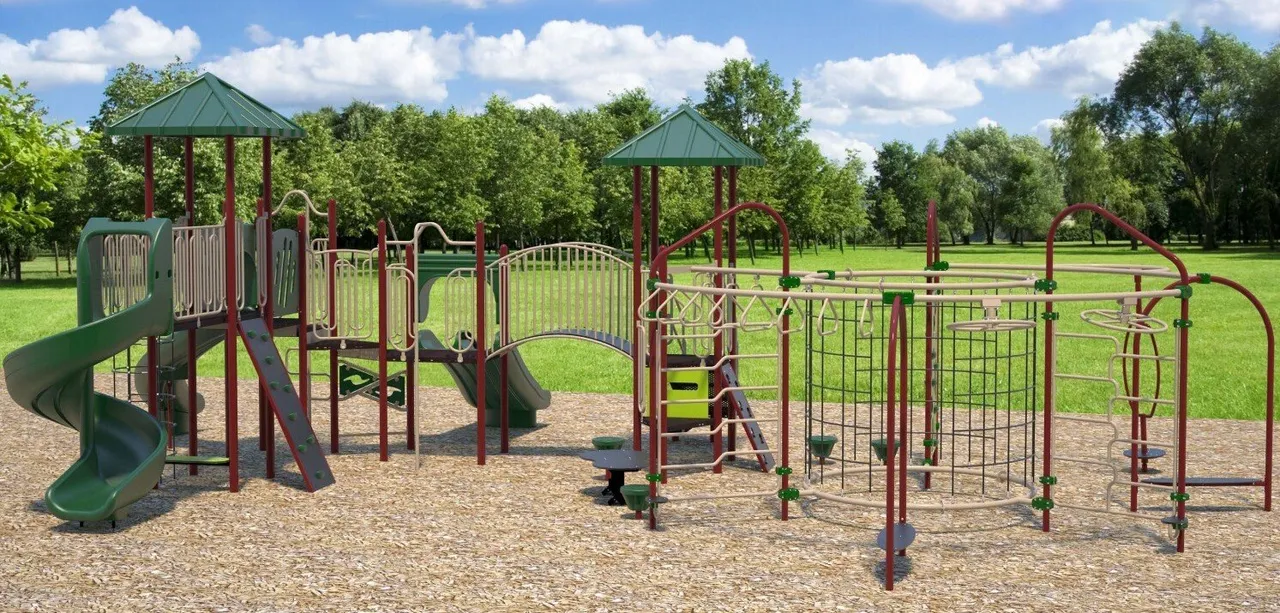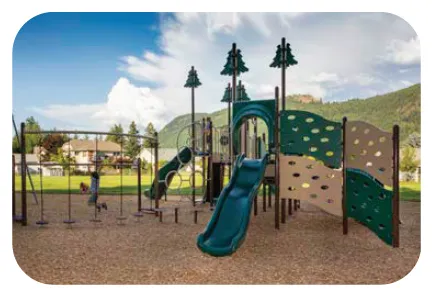Feb 1, 2023
The Greening of Playgrounds
The public playground landscape changed dramatically in the year 2000 when the State of California began to require compliance with National Playground Safety Institute recommendations for safety. Since the State is so large and influential, almost all of the manufacturers re-tooled and redesigned their products to be in compliance. That, in effect, took the entire nation to safer playground environments.
Playground designers have had a much larger role than in previous times. Many new ideas, new activities, new components, as well as many surfacing options became available. Since the safety requirements limited some of the riskier activities, the designers moved to many more types of play. That has continued to be the direction designers have taken.
In the last few years, there has been an increased request for designs in the wooden field. There are some advantages to using wood as the main structural material for these products:
- The design possibilities are many and varied.
- Themes are developed and customized: such as boats, marine themes, forts, historical replicas, villages, and many others.
- The natural beauty of wood gives it both a visual and sensory attraction.
- The strength of wood is exceptional due to the microscopic cellulose strands extending throughout the length.
Customization is natural. - Higher forts with double-decker levels are very popular.
- Since the wood has been treated with ACQ, a non-toxic preservative, it gives it a lifetime warranty. This is completely safe for children to play on.
Organizations that have decided to go with wood structures have reported that they love these structures. The kids have also been very enthusiastic about the new play spaces.
There are a few disadvantages to the wood material to consider. The main issue is that wood weathers in the environment. This is easily addressed by treating the wood every few years with oil or specific treatment for the species used. It can be sprayed onto the wood. Another disadvantage would be the price of a wooden structure compared to a manufactured steel structure.
This material is very popular for the community playgrounds which are all over the country. Usually. an organization or community requests a design that meets their specific requirements, including space limitations, activities and budget. The community can build it themselves, saving a great deal of money, with a consultant from the manufacturer on site to direct operations. It has been a project that local businesses can participate in by donating the wood and other materials needed for the project.
More traditional manufacturers using steel posts and components have designed many models with a natural or forest theme and colors to provide a less expensive alternative to the wooden designs. They have a look that blends into the environment. These designs provide many more activities that already have been designed for the usual models. There are components that are in many categories, so that, whatever the theme is, ideas and play can be expanded.
There are several reasons for this interest in wooden and natural play areas. Although we have not seen data that specifically addresses it, we are aware of the interest in climate change and general environmental impacts in elementary school curriculums.
These natural theme playgrounds are very compatible with gardens (which schools often feature), nature areas, specific plant colonies and mini-waterfall areas to name a few options.
One natural playground near Lake Tahoe features signs with detail about animals and plants in the area as well as contributions from the Native American tribes.
For the boat models, there can be separate panels that demonstrate water travel planning and navigation methods that deal with storms and weather issues.

